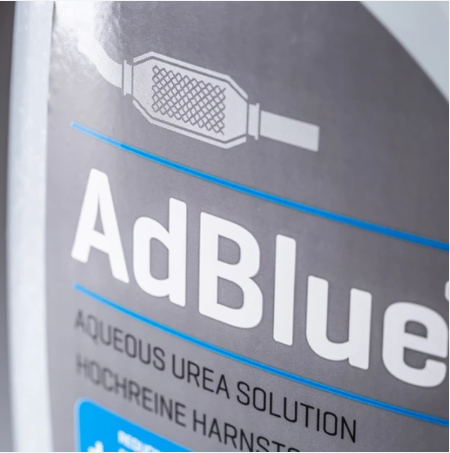The growing demand for eco-friendly technologies has thrust Ad Blue into the spotlight. As a crucial component for reducing harmful emissions in diesel vehicles, it plays a pivotal role in meeting stringent environmental regulations. Understanding Ad Blue, its purpose, and its benefits is essential for vehicle owners and businesses aiming to comply with modern standards. Let’s delve into this remarkable product and how it’s revolutionizing the automotive industry.
What is Ad Blue?
Ad Blue is a high-purity urea solution, scientifically composed of 32.5% urea and 67.5% deionized water. It is specifically used in diesel engines with Selective Catalytic Reduction (SCR) systems to minimize nitrogen oxide (NOx) emissions. By breaking down harmful pollutants into harmless nitrogen and water vapor, Ad Blue aids vehicles in achieving compliance with Euro 6 emission standards.
Why Do Diesel Engines Need Ad Blue?
Diesel engines are known for their efficiency and durability, but they also produce significant NOx emissions. These emissions are a major contributor to air pollution and acid rain. To counter this, SCR systems inject Ad Blue into the exhaust stream. This initiates a chemical reaction that neutralizes NOx emissions, making diesel vehicles less harmful to the environment.
How Does Ad Blue Work?
The process begins when Ad Blue is injected into the exhaust gases of a diesel engine:
- The high temperatures in the exhaust convert the urea into ammonia.
- This ammonia reacts with NOx in the SCR catalyst, converting it into nitrogen and water vapor.
- The result is a significant reduction in toxic emissions.
This straightforward yet powerful mechanism underscores the importance of Ad Blue in modern vehicles.
Benefits of Using Ad Blue
Ad Blue offers several advantages, both for the environment and vehicle performance:
- Lower Emissions: Reduces NOx levels by up to 90%.
- Improved Fuel Efficiency: SCR systems allow engines to operate more efficiently, saving fuel in the long term.
- Compliance with Regulations: Meets global environmental standards, including Euro 6 and EPA Tier 4.
- Extended Engine Life: Reduces strain on the engine by optimizing combustion processes.
As a result, Ad Blue not only protects the planet but also benefits vehicle owners financially.
Common Questions About Ad Blue
What happens if you run out of Ad Blue?
Most vehicles equipped with SCR systems will not start or operate if the Ad Blue tank is empty. This ensures compliance with emission standards.
Is Ad Blue toxic?
No, Ad Blue is non-toxic and safe to handle. However, it can corrode certain metals, so proper storage is essential.
Ad Blue vs. Diesel: Are They the Same?
Despite their close relationship in diesel engines, Ad Blue and diesel are entirely different substances. While diesel is the primary fuel, Ad Blue is an emission-reducing additive. Mixing the two can damage the vehicle’s system and lead to costly repairs.
Who Needs Ad Blue?
- Commercial Fleet Operators: Trucks and buses with SCR systems rely on Ad Blue to meet emission standards.
- Passenger Vehicle Owners: Modern diesel cars often require Ad Blue for compliance.
- Agricultural and Construction Vehicles: Heavy-duty machinery also benefits from reduced emissions.
Whether you own a single vehicle or manage a large fleet, Ad Blue is essential for minimizing environmental impact.
How to Store Ad Blue Correctly?
Proper storage is key to maintaining the effectiveness of Ad Blue:
- Keep it in temperatures between -11°C and 30°C.
- Store it in a sealed, dedicated container to prevent contamination.
- Avoid exposure to direct sunlight.
Following these guidelines ensures that your Ad Blue remains effective for up to 12 months.
The Cost of Ad Blue
The cost of Ad Blue can vary based on location and supply chain factors. On average, it ranges between $0.50 and $1.50 per liter. Considering its impact on emission reduction, this is a small investment for significant benefits.
Environmental Impact of Ad Blue
The introduction of Ad Blue has been a game-changer in reducing air pollution. Statistics show that diesel vehicles using SCR systems emit up to 90% less NOx compared to traditional engines. This makes Ad Blue a cornerstone of global efforts to combat climate change.
The Future of Ad Blue
With the automotive industry shifting toward sustainability, the demand for Ad Blue is expected to grow. Emerging technologies, such as bio-based urea solutions, promise even greater efficiency and lower costs.
FAQs About Ad Blue
What is the shelf life of Ad Blue?
When stored correctly, Ad Blue can last up to 12 months without losing its effectiveness.
Can you refill Ad Blue yourself?
Yes, refilling Ad Blue is straightforward. Most vehicles have dedicated filler caps, and refills are available at service stations.
Does Ad Blue freeze in winter?
Ad Blue freezes at -11°C. However, vehicles with SCR systems are equipped with heaters to prevent freezing.
Is Ad Blue mandatory for all diesel vehicles?
Not all, but most modern diesel vehicles with SCR systems require Ad Blue to comply with emission laws.
How often do you need to top up Ad Blue?
Consumption depends on driving habits but is generally 1.5 liters per 1,000 kilometers.
Can Ad Blue harm the environment?
No, Ad Blue is environmentally safe, as it breaks down into non-toxic substances.
Conclusion
Ad Blue is more than just a diesel additive; it’s a solution driving the transition to cleaner, greener transportation. By reducing harmful emissions and promoting engine efficiency, Ad Blue helps individuals and businesses contribute to a healthier environment. As technology advances, its role in achieving sustainable goals will only grow stronger.





Comments